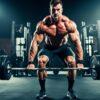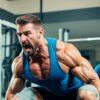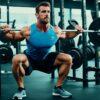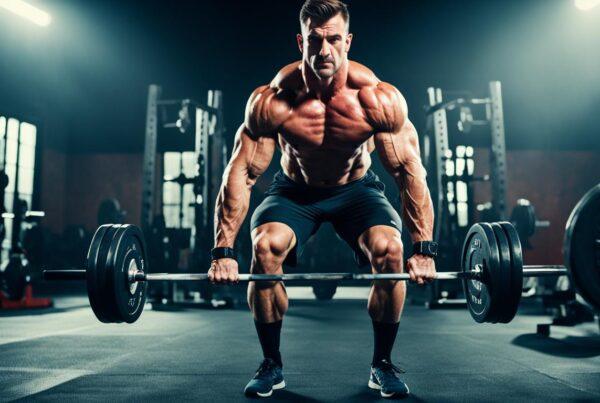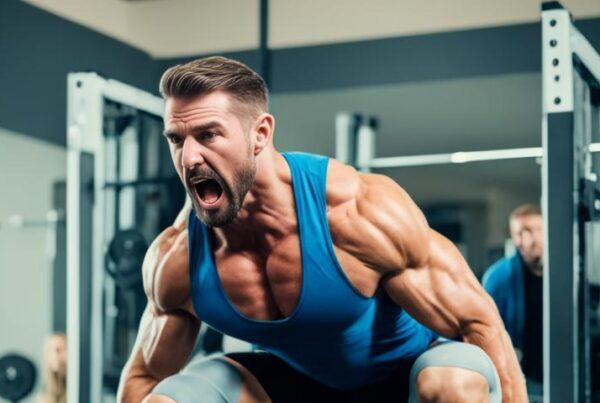Are you looking for a rowing workouts that build muscle, increase strength, and improve your overall fitness? Look no further than rowing workouts. Rowing is a low-impact, high-intensity cardio exercise that targets all major muscle groups in your body. With each stroke, you engage 70% of your muscles, providing a full-body workout that can lead to muscle growth and hypertrophy.
Rowing offers numerous benefits beyond muscle activation. It improves posture, enhances cardiovascular health, and promotes efficient oxygen consumption. Whether you’re a beginner or an experienced fitness enthusiast, rowing workouts are suitable for all fitness levels and can help you achieve your goals.
Ready to get started with rowing workouts? In this article, we will explore why rowing is effective for building muscle, the benefits of rowing machine workouts, rowing workouts for beginners, proper rowing form, the role of rowing in strength training, and how to combine rowing and strength training for maximum results. Let’s dive in!
Key Takeaways:
- Rowing workouts engage 70% of your body’s muscles and provide a full-body workout.
- Rowing improves posture, cardiovascular health, and oxygen consumption.
- Rowing machine workouts burn calories and target major muscle groups with low impact on joints.
- Beginners can start with form and drill classes, interval training, and endurance rows.
- Proper rowing form involves a wide handle grip and focusing on leg and core strength.
Rowing Workouts That Build Muscle
Rowing is not just a cardiovascular exercise; it also offers significant benefits for building muscle. By engaging multiple muscle groups simultaneously, rowing provides a full-body workout that can improve endurance, muscle tone, and strength.
One of the key advantages of rowing is that it targets various muscle groups, including the legs, glutes, core, back, shoulders, and arms. This comprehensive muscle activation allows you to work multiple muscle groups at once, resulting in more efficient and effective workouts.
Moreover, rowing is a low-impact exercise that is gentle on the joints. Unlike high-impact activities like running, rowing offers a low-risk option for individuals with joint sensitivities or injuries. This makes rowing accessible to a wider range of people, allowing them to experience the benefits of a full-body workout without causing strain on their joints.
Rowing also promotes efficient oxygen consumption, improving cardiovascular health in the process. As you row, your heart rate increases, leading to improved stamina and endurance. This cardiovascular component of rowing further enhances its effectiveness as a muscle-building exercise.
So, whether you’re looking to tone your muscles, increase strength, or benefit from a full-body workout, rowing can be a valuable addition to your fitness routine. Give it a try and feel the difference it can make in your overall fitness journey.
The Benefits of Rowing Machine Workouts
Rowing machine workouts offer several benefits for your fitness journey. Whether you’re aiming to burn calories, target major muscle groups, or find a joint-friendly exercise option, rowing has got you covered. Here are some of the key advantages:
1. Calorie Burn: Rowing machine workouts are highly effective for calorie burn. Engaging your entire body in a full-body workout, rowing can help you torch calories and reach your weight loss goals.
2. Joint-Friendly Exercise: Unlike high-impact exercises that put stress on your joints, rowing is a low-impact exercise that offers a joint-friendly alternative. It provides a smooth and fluid motion, reducing the risk of injuries and allowing you to exercise without discomfort.
3. Workout Variety: Rowing machines offer a variety of workout options to suit your preferences and goals. Whether you’re looking for high-intensity interval training, endurance training, or strength training, you can find a rowing workout that fits your needs.
4. Target Major Muscle Groups: Rowing is an efficient way to work out all major muscle groups in your body. With each stroke, you engage your legs, glutes, core, back, shoulders, and arms, providing a comprehensive workout that strengthens and tones your entire body.
5. Efficiency: Rowing machine workouts offer efficiency, allowing you to achieve a full-body workout in a shorter amount of time compared to other forms of cardio exercise. In just one session, you can maximize your calorie burn and work multiple muscle groups simultaneously.
Rowing provides a total-body workout, efficiently targeting major muscle groups while protecting your joints. It’s a versatile exercise option that combines calorie burn, muscle toning, and cardiovascular benefits.
To illustrate the efficiency of rowing machine workouts, here’s an example of a calorie burn comparison:
| Exercise | Calories Burned in 30 Minutes (150-lb Individual) |
|---|---|
| Rowing Machine | 255 calories |
| Running (6 mph) | 270 calories |
| Elliptical | 240 calories |
| Cycling (moderate intensity) | 210 calories |
As shown in the table, rowing machine workouts offer a comparable calorie burn to running while providing a joint-friendly exercise option. It’s a versatile and efficient exercise choice for individuals of all fitness levels.

With the benefits of calorie burn, joint-friendly exercise, workout variety, major muscle group targeting, and efficiency, rowing machine workouts are an excellent addition to your fitness routine. Incorporate rowing into your workouts and experience the transformative effects on your body and overall well-being.
Rowing Workouts for Beginners
Are you new to rowing and looking for beginner-friendly workouts to get started? Look no further! In this section, we’ll explore various rowing exercises and training approaches that are perfect for beginners like you. Whether you’re completely new to rowing or just getting back into fitness, these workouts will help you build a strong foundation and progress at your own pace.
Form and Drill Classes
One of the best ways to kickstart your rowing journey is by joining form and drill classes. These classes focus on teaching you proper rowing technique, ensuring that you perform each stroke correctly and efficiently. By mastering the fundamentals, you’ll be able to maximize the benefits of rowing while minimizing the risk of injury.
Interval Training
Interval training is a great way to vary the intensity of your rowing workouts. It involves alternating between periods of high-intensity rowing and active recovery. This type of training helps improve cardiovascular fitness, burn calories, and challenge your muscles. By incorporating intervals into your rowing routine, you’ll gradually increase your stamina and endurance.
Endurance Rows
Endurance rows are longer, steady-state workouts that focus on rhythm, stroke efficiency, and building endurance. These workouts are perfect for beginners as they allow you to establish a consistent pace and get comfortable with rowing for extended periods. Endurance rows help improve cardiovascular health, enhance endurance, and build mental resilience.
Progressive Overload
Progressive overload is crucial for stimulating muscle growth and getting stronger. It involves gradually increasing the intensity, duration, or resistance of your workouts over time. As a beginner, start with lighter resistance and shorter workouts, then gradually increase the difficulty as you get stronger and more comfortable with rowing. By progressively challenging your muscles, you’ll promote growth and see continuous progress.
Peloton Row is a fantastic resource for beginners, offering a wide range of beginner-friendly workouts that emphasize proper form and technique. They provide a structured and gradual progression from basic rowing workouts to more challenging sessions, ensuring that you can safely and effectively build your fitness levels.
Get started with these beginner-friendly rowing workouts and take your first step towards achieving your fitness goals. Remember to consult with a fitness professional or coach to tailor your workouts to your individual needs and capabilities. Now, let’s dive into the wonderful world of rowing!
| Benefits | Workout Types | Progression |
|---|---|---|
| Improves cardiovascular health | Form and drill classes | Gradual increase in intensity and duration |
| Builds muscle strength and endurance | Interval training | Challenging intervals over time |
| Enhances rowing technique and rhythm | Endurance rows | Establishing consistent pace |
| Stimulates muscle growth | Progressive overload | Gradually increasing difficulty |
How to Use a Rowing Machine with Proper Form
Using a rowing machine with proper form is crucial to effectively engage your muscles and prevent injuries. Here are some key tips to ensure you maintain the correct rowing machine technique:
- Handle Grip: Position your hands wide on the handle, with your pinkies at the edges and your thumbs wrapping underneath. This grip allows for a secure and stable hold on the handle.
- Legs and Core: During the rowing stroke, focus on using your legs and core to do the majority of the work. Push through your legs, engaging your quads and glutes, and maintain a strong core throughout the movement.
- Arm Contribution: While your legs and core drive most of the power, your arms play a secondary role. They should contribute a smaller percentage of the overall effort, primarily pulling the handle towards your chest once your legs are fully extended.
- Hip Extension: To maximize muscle activation and power, focus on fully extending your hips at the end of the stroke. This allows for a powerful transfer of momentum and engages your glutes and hamstrings.
- Good Posture: Maintaining proper posture throughout the rowing exercise is important for muscle activation and to prevent strain on your joints. Keep your back straight, shoulders relaxed, and gaze forward.
By following these rowing exercise form tips, you can optimize the effectiveness of your rowing machine workouts and ensure a safe and efficient workout.
| Rowing Machine Technique Tips | Muscle Activation |
|---|---|
| Avoid rounding your back during the stroke | Engage your core for stability and power |
| Keep your shoulders relaxed and down | Activate and strengthen your upper back muscles |
| Drive through your heels to engage your glutes and hamstrings | Target and tone your lower body muscles |
| Focus on a smooth and controlled movement | Activate your muscles throughout the entire range of motion |
| Stay consistent with your rowing machine technique | Maximize muscle activation and progress in your workouts |
Can Rowing Replace Strength Training?
While rowing is a highly effective form of exercise that engages multiple muscle groups and offers numerous benefits for overall fitness, it may not completely replace dedicated strength training for muscle hypertrophy and significant muscle growth.
Rowing primarily targets and strengthens certain large muscle groups, such as the legs, glutes, back, and shoulders. It provides a great cardiovascular workout and promotes muscle activation throughout the body. However, exercises like deadlifts, squats, and bench presses specifically target individual muscle groups and elicit a higher level of muscle stimulation, leading to greater muscle hypertrophy.
“Rowing is an excellent way to improve your endurance, cardiovascular health, and overall fitness. It engages multiple muscle groups, making it a great full-body workout. However, to achieve significant muscle growth and continuous progress, a balanced combination of rowing and dedicated strength training is recommended.”
Resistance training with weights or calisthenics is necessary to apply the principle of progressive overload, which is essential for muscle hypertrophy and continuous muscle growth. The progressive overload principle involves gradually increasing the demands placed on the muscles over time, either by increasing resistance, intensity, or volume. This stimulates the muscles to adapt and grow stronger.
“Resistance training with weights or calisthenics is necessary to maximize muscle growth and continuous progress. Rowing alone may not provide the same level of muscle stimulation as dedicated strength training exercises.”
Rowing can complement strength training by providing an additional way to engage the muscles, improve endurance, and boost overall fitness. It can be incorporated into a well-rounded training program to enhance cardiovascular health and add variety to workouts. Additionally, rowing can help improve muscular endurance, power output, and functional movement patterns.
However, for those aiming to build significant muscle mass, it is important to include dedicated strength training exercises that target specific muscle groups and apply progressive overload. This combination of rowing and strength training can optimize muscle-building potential and create a well-rounded training program that promotes muscle growth, strength, and overall fitness.
Benefits of Combining Rowing and Strength Training:
- Maximizes muscle-building potential
- Enhances overall strength and power
- Improves cardiovascular health and endurance
- Promotes a well-rounded and balanced training program
- Provides variety and keeps workouts challenging and engaging
By combining the benefits of rowing and strength training, individuals can create a comprehensive workout routine that targets both muscle growth and cardiovascular health. This balanced approach ensures that all muscle groups are adequately trained and allows for continuous progress and improvement.
“A well-rounded fitness program incorporates both rowing and strength training to achieve the best results. This approach allows for optimal muscle growth, overall strength development, and improved cardiovascular fitness.”
Combining Rowing and Strength Training
Maximize your muscle-building potential and overall fitness by combining rowing and strength training. While rowing primarily targets specific muscle groups, strength training exercises can help target other muscles and maintain muscle balance. With rowing, you get a full-body workout that improves cardiovascular health, while strength training focuses on increasing muscle mass and strength. By incorporating both types of exercise into your weekly routine, you can achieve a balanced and effective training program that builds muscle, power, and endurance.
Rowing is a fantastic form of exercise that engages multiple muscle groups in your upper and lower body. It is a full-body workout that helps develop power, strength, and endurance. Strength training, on the other hand, allows you to specifically target certain muscle groups, ensuring that your body remains balanced and well-developed.
“Combining rowing and strength training offers a well-rounded approach to fitness. Rowing provides a unique cardiovascular challenge while engaging a significant number of muscles. Strength training helps build muscle mass and increase overall strength.” – Dr. Lisa Thompson, Exercise Physiologist
When you combine rowing and strength training, you can enjoy the benefits of both exercises. Rowing provides a low-impact, full-body workout that improves cardiovascular health, boosts endurance, and activates a wide range of muscles. Strength training helps increase muscle mass and strength, promoting muscle growth and enhancing overall muscular power.
By incorporating both rowing and strength training into your weekly routine, you create a well-rounded and effective training program. This combination allows you to target various muscle groups, enhance overall fitness, and achieve your desired muscle-building potential.
Here’s an example of a weekly training schedule that combines rowing and strength training:
| Day | Activity |
|---|---|
| Monday | Strength Training: Upper Body Focus |
| Tuesday | Rowing: High-Intensity Interval Training (HIIT) |
| Wednesday | Active Rest Day: Light cardio or stretching |
| Thursday | Strength Training: Lower Body Focus |
| Friday | Rowing: Endurance Row |
| Saturday | Strength Training: Full-Body Workout |
| Sunday | Rest Day |
When combining rowing and strength training, it’s crucial to pay attention to your body’s needs and recovery. Ensure you have rest days scheduled in your training program to allow for muscle repair and growth. Additionally, proper nutrition and adequate sleep are essential to support your muscle-building goals.
Remember, rowing and strength training are complementary exercises that work together to help you achieve your fitness goals. Whether you’re looking to build muscle, increase power, or improve endurance, combining these two forms of exercise can provide a well-rounded and effective training program.
So, start incorporating rowing and strength training into your fitness routine and unlock your muscle-building potential, while enjoying the benefits of a full-body workout, increased power, and endurance.
Conclusion
Rowing workouts offer a unique and effective combination of muscle growth and overall fitness. By engaging multiple muscle groups and improving cardiovascular health, rowing provides a well-rounded workout that can help you achieve your fitness goals. However, it’s important to note that rowing alone may not be enough for significant muscle hypertrophy. To optimize muscle-building potential, it’s recommended to combine rowing with dedicated strength training.
By incorporating proper form, progressive overload, and a balanced nutrition plan into your training program, you can maximize your muscle-building potential. While rowing targets specific muscle groups, strength training exercises can target additional muscles, ensuring a balanced and comprehensive approach to muscle growth. Remember to focus on maintaining proper form and gradually increasing the intensity and duration of your workouts to challenge your muscles and stimulate growth.
Creating a balanced training program that combines rowing workouts with strength training will allow you to optimize your fitness journey. Whether your goal is to get stronger, build muscle, or improve your overall fitness, rowing can be a valuable addition to your workout routine. By finding the right balance between rowing and strength training, you can create an effective workout combination that will help you achieve your desired results.



